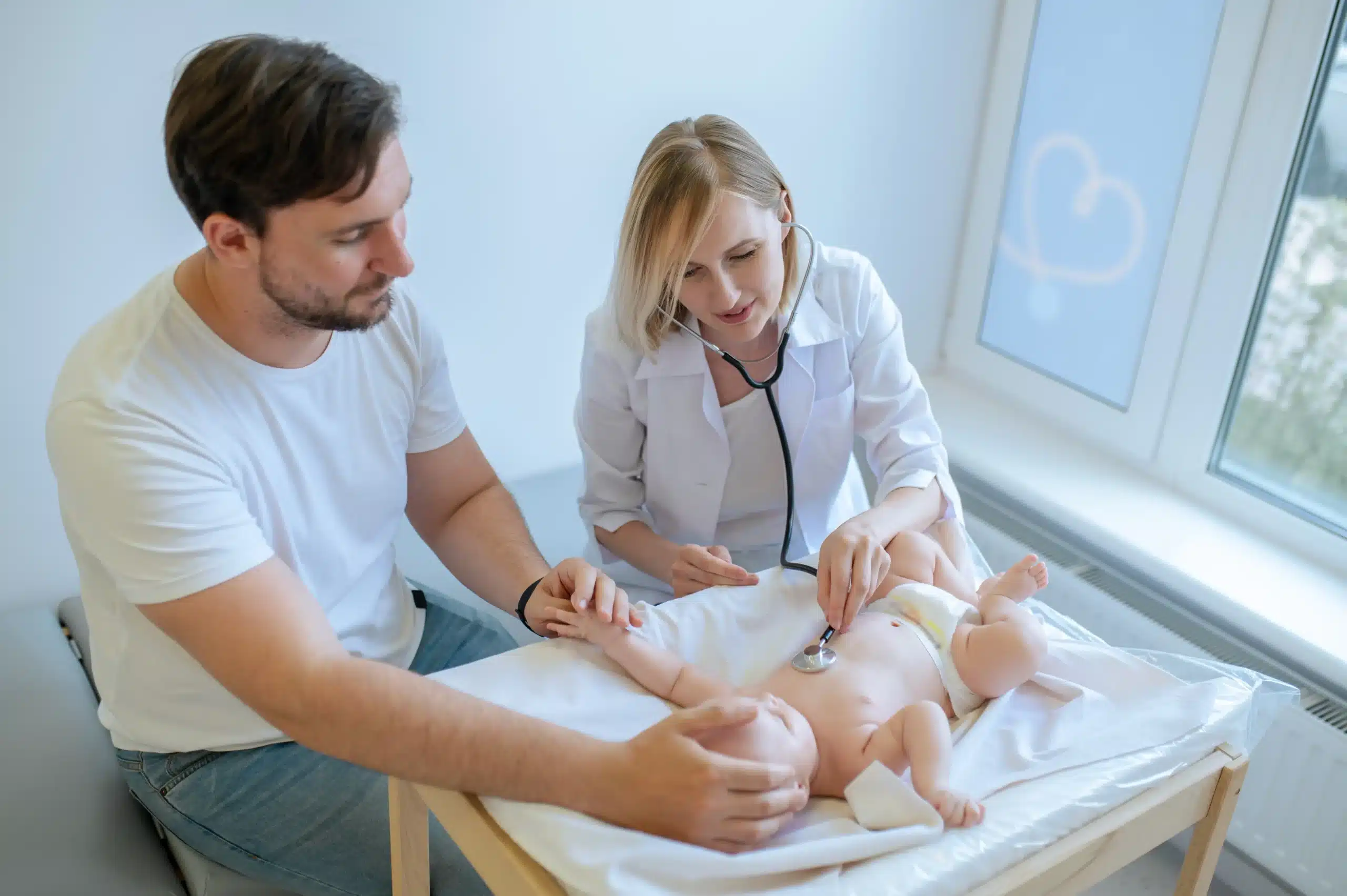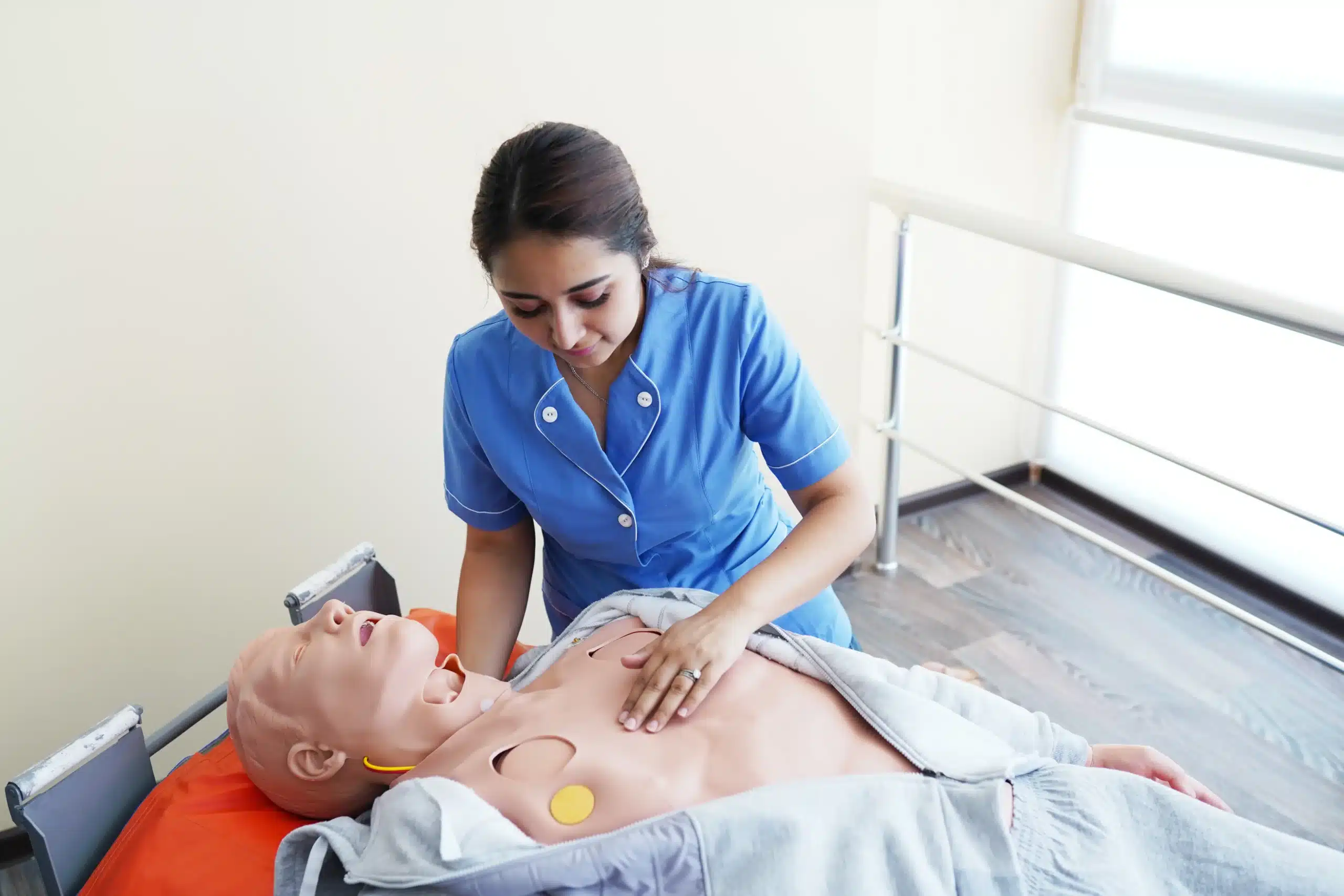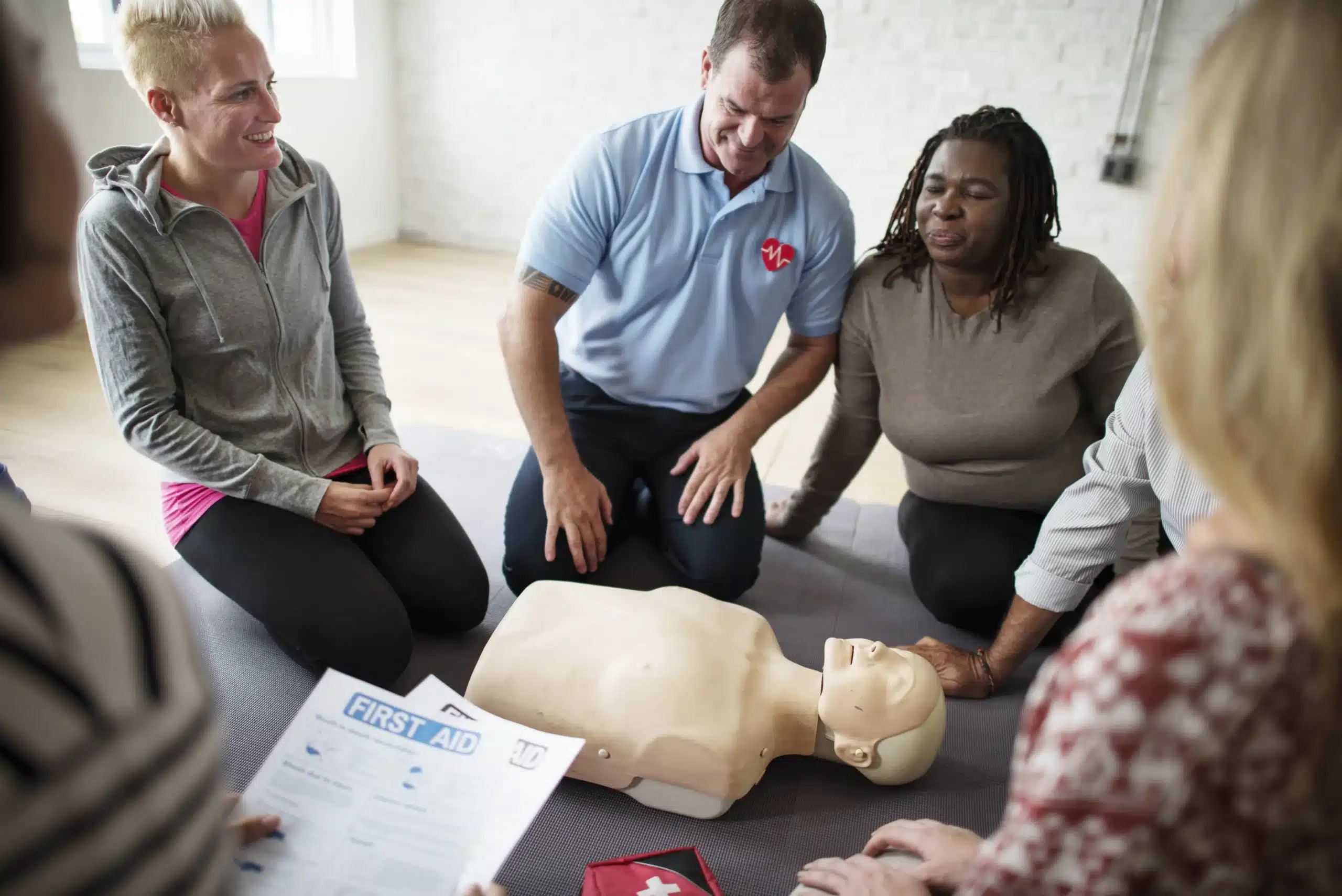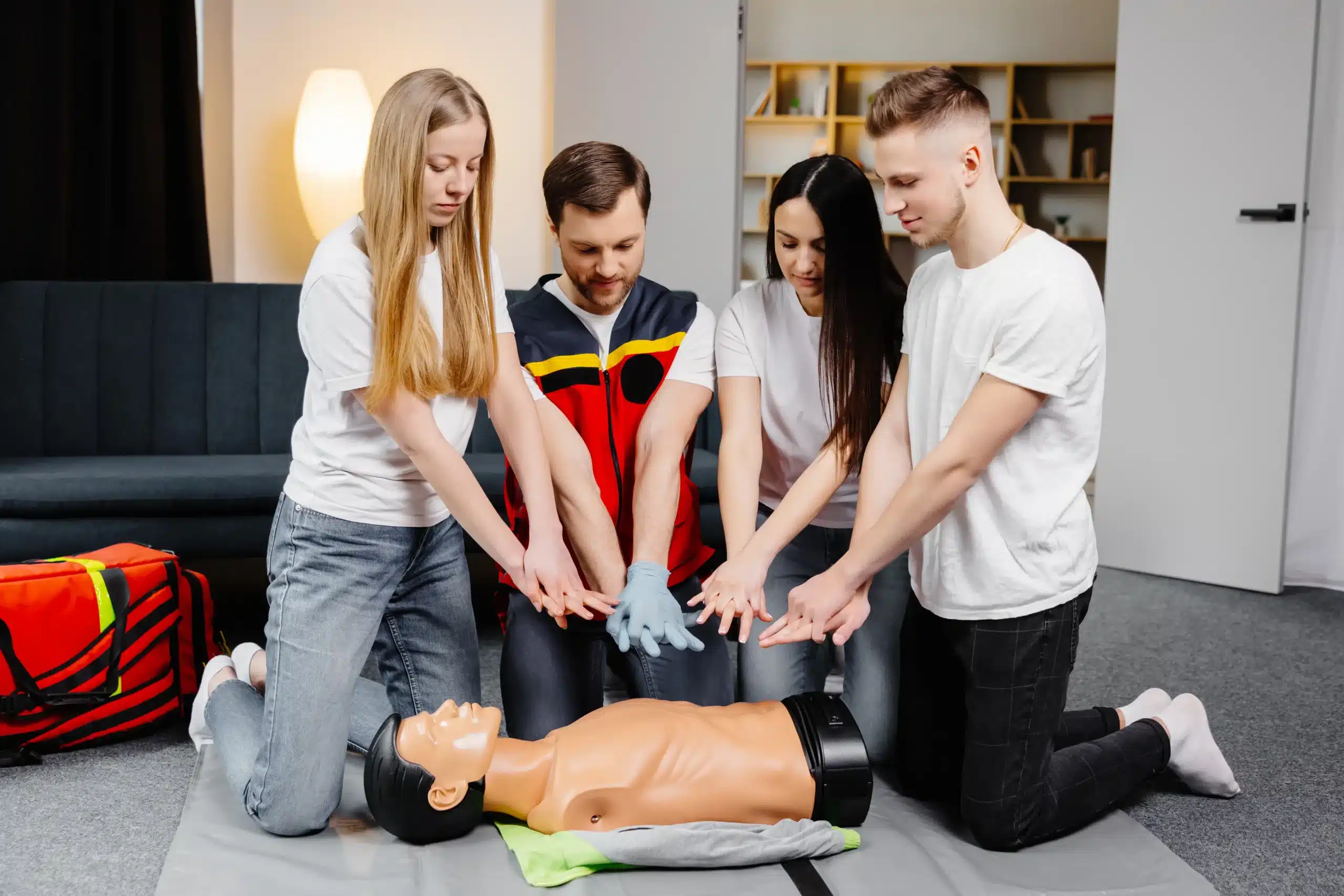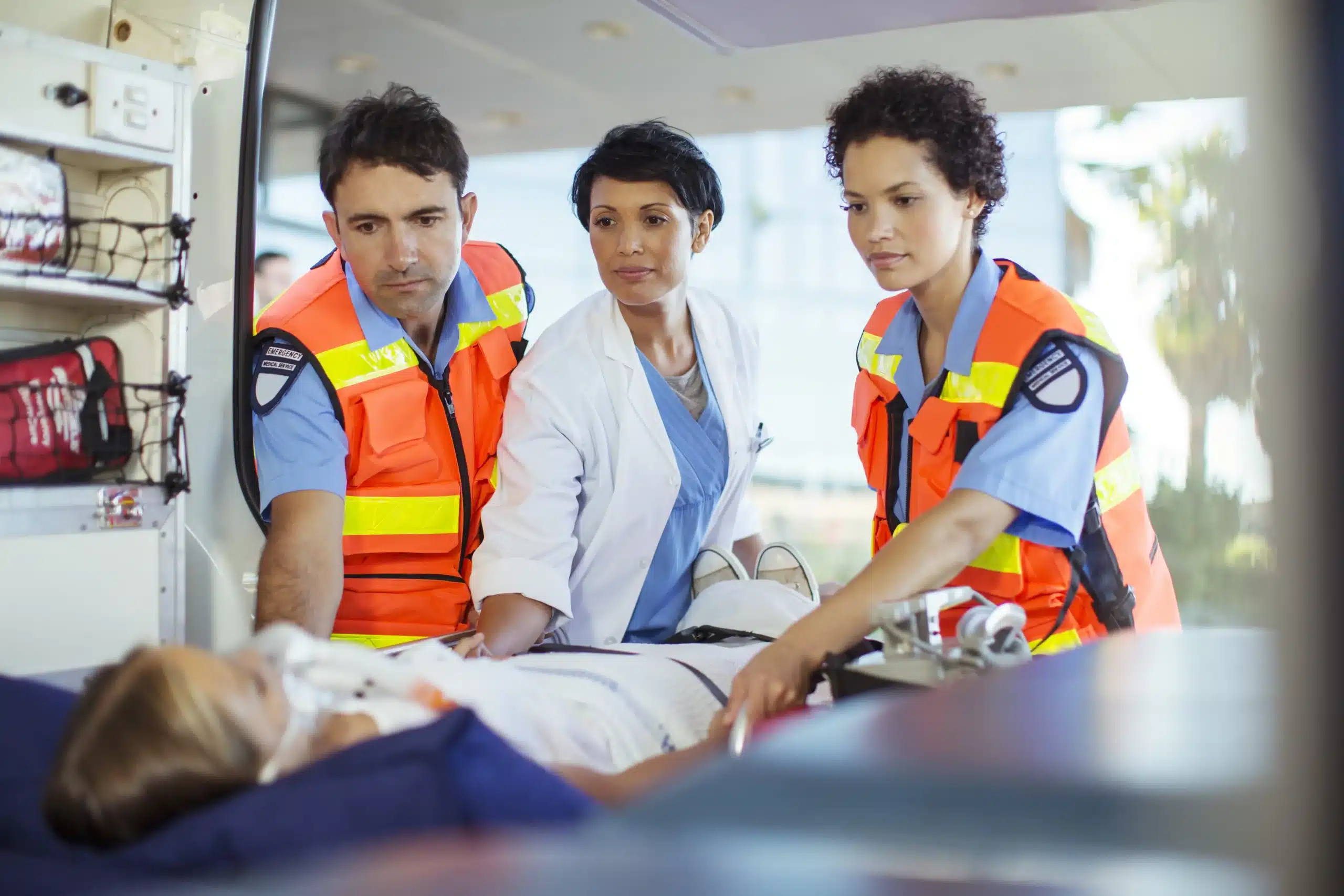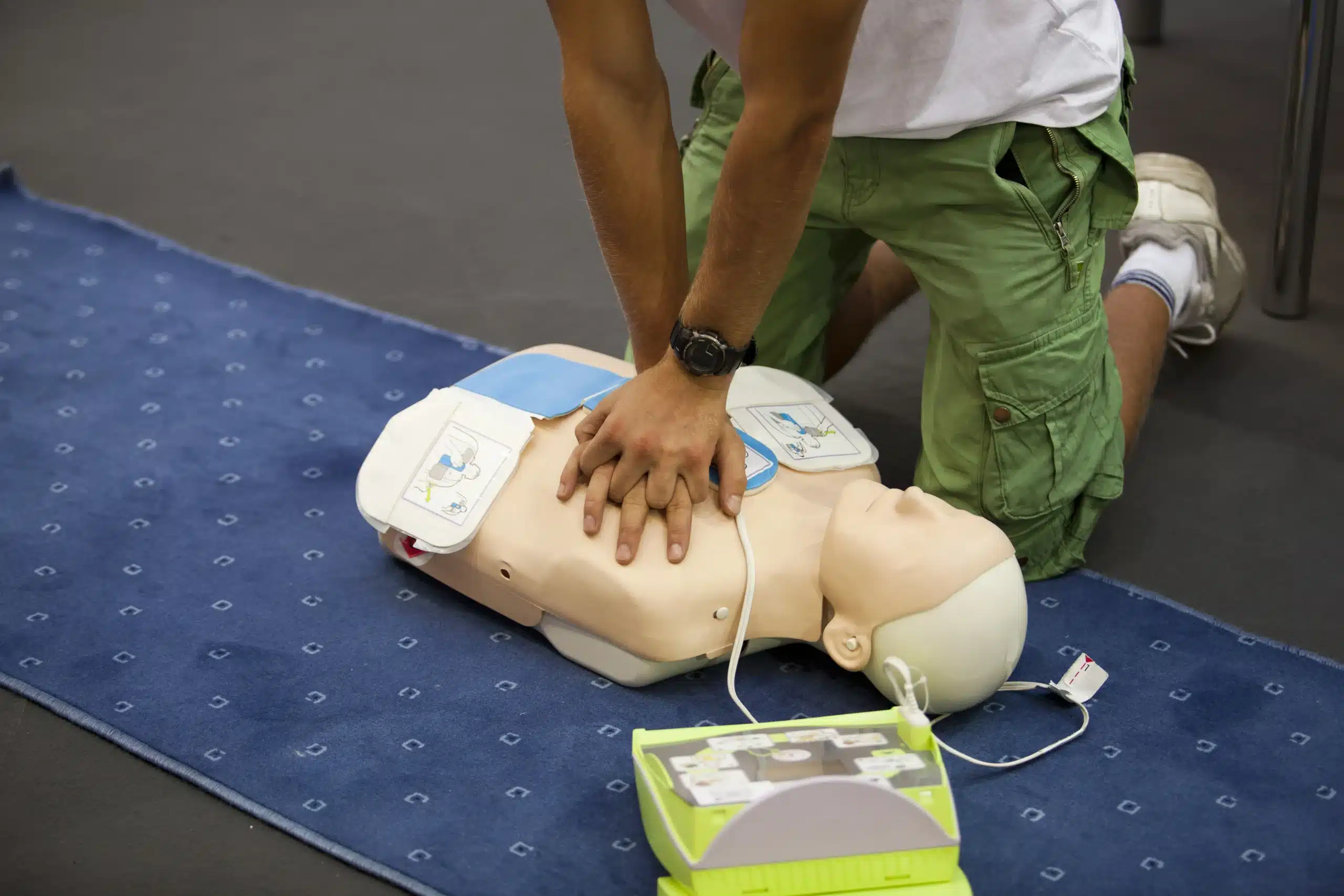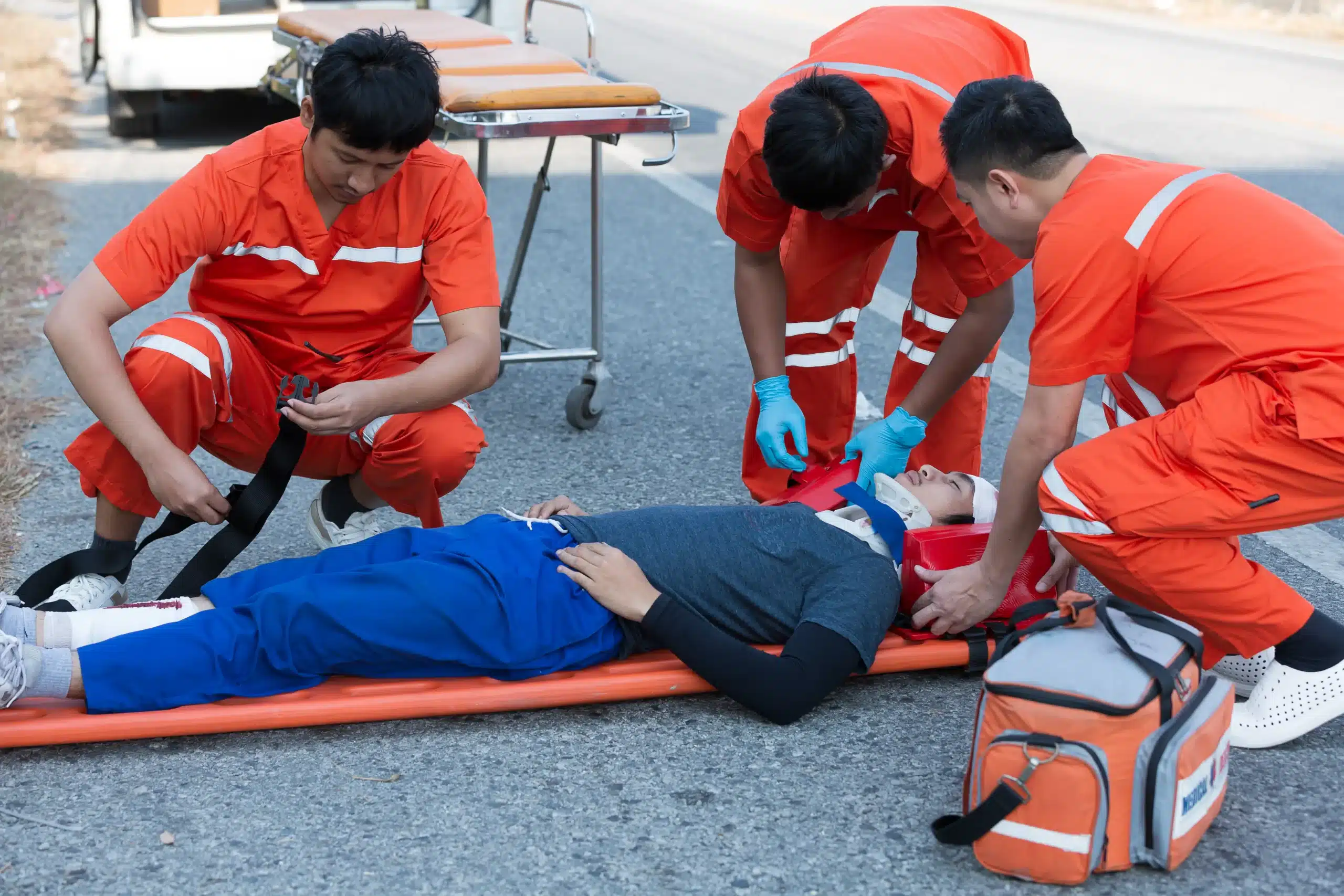Equipping yourself with the skills to save a life is an incredibly empowering step. BLS classes near me offer comprehensive training in Basic Life Support, providing you with the knowledge and confidence to respond effectively in medical emergencies. This article will explore the core components of BLS certification, including CPR, AED usage, and first aid techniques. We’ll also discuss the various class formats available, from in-person training to blended learning options, and provide guidance on choosing a reputable provider. Whether you’re pursuing a career in healthcare or simply want to be prepared for any situation, this post will help you find the perfect BLS training to meet your goals.
Key Takeaways
- BLS skills empower you in emergencies: From CPR and AED use to first aid and critical thinking, BLS training provides essential knowledge and skills to respond effectively in various medical situations.
- Finding the right BLS course is easy: Consider your learning style and schedule when choosing between in-person, blended, or online formats. Compare providers, explore discounts, and prioritize reputable organizations.
- Stay prepared by maintaining your BLS certification: Remember that certification is typically valid for two years. Schedule renewal courses, practice your skills, and stay informed about the latest guidelines to ensure your readiness.
What are BLS Classes & Why are they Important?
BLS (Basic Life Support) classes teach you the skills to respond to life-threatening emergencies. These classes are crucial for anyone in a position to help someone experiencing cardiac arrest, respiratory distress, or an obstructed airway. BLS goes beyond basic CPR and provides a more comprehensive approach to patient care. For those in the Dublin, Livermore, or San Ramon area, convenient options are available.
Key BLS Skills
BLS certification covers a broad range of skills, including CPR, first aid, and how to use an AED. It also emphasizes the importance of scene safety, critical thinking, problem-solving, communication, and teamwork during emergencies. You’ll learn how to quickly assess a situation, make informed decisions under pressure, and work effectively with others to provide the best possible care. Even seemingly simple things, like understanding the emergency medical system and relevant legal considerations, are covered in BLS training. These skills are invaluable for various professions and personal situations.
Who Needs BLS Certification?
While valuable for anyone, BLS certification is especially important for healthcare professionals like doctors, nurses, and EMTs. It’s often a job requirement in these fields, as these individuals are frequently the first on the scene during medical crises. The advanced techniques taught in BLS classes empower them to manage complex situations and potentially save lives. If you’re considering a career in healthcare, getting your BLS certification is a smart move. Even outside of healthcare, many professions, such as teachers, coaches, and childcare providers, benefit from having team members with BLS training. Group discounts are often available for workplaces looking to train multiple staff members.
Common BLS Misconceptions
One common misconception about BLS certification is that it can be obtained entirely online. While some online components may be involved, the American Heart Association (AHA) BLS certification requires an in-person skills assessment. You’ll need to demonstrate your proficiency in a practical setting to become fully certified. Another misconception revolves around the online portion itself. Some students have reported challenges with online modules due to technical issues or outdated content. If you experience this, reach out to your training provider for assistance. Choosing a reputable provider like Dublin CPR Classes can often minimize these issues, as they prioritize up-to-date materials and offer support to their students. For those looking for a streamlined online renewal process, the RQI program offers a convenient option.
Find the Best BLS Classes Near You
Finding the right BLS class can feel overwhelming, but with a little guidance, you can easily pinpoint the perfect fit. This section breaks down top providers, key factors to consider, and helpful tools to streamline your search.
Top BLS Certification Providers
Several reputable organizations offer BLS certification. Understanding their different approaches can help you make an informed decision.
Dublin CPR Classes
Dublin CPR Classes provides a range of CPR and BLS training tailored to healthcare professionals and the general public. They emphasize small class sizes and hands-on learning. Serving Dublin, Livermore, and San Ramon, their focus is on providing local, convenient training. Check out their low price guarantee and group discounts. They also offer convenient RQI classes for online recertification.
American Heart Association
The American Heart Association (AHA) is a well-respected name in BLS certification. Keep in mind that AHA BLS certification requires both an online component and an in-person skills assessment. There isn’t a fully online option for AHA certification.
American Red Cross
The American Red Cross also offers widely recognized BLS certification courses. These courses are valuable for healthcare providers and other professionals who may need to respond to emergencies.
National CPR Foundation
The National CPR Foundation provides various CPR and BLS courses catering to both healthcare professionals and the general public. They offer BLS certification.
ProTrainings
ProTrainings offers flexibility with online and blended learning options for BLS certification. This allows you to tailor your learning experience to your schedule and preferences. They offer BLS Certification Training.
Health & Safety Institute (HSI)
HSI provides a range of BLS courses adhering to the latest guidelines, designed for both healthcare providers and those seeking general knowledge. They offer BLS training.
Choosing a Class: Factors to Consider
When selecting a BLS class, consider a few key factors. Think about whether an in-person or online course better suits your learning style. Also, if your certification is expiring soon, be sure to enroll in a renewal course to avoid a lapse in your credentials.
Find Nearby Classes: Helpful Tools
Many organizations offer online search tools to locate classes near you. For example, you can check the Red Cross website for specific course dates, times, and locations in your area. You can also explore a Northern CA CPR directory for a comprehensive list of training providers.
Compare BLS Class Formats & Costs
Choosing the right BLS class format depends on your learning style, schedule, and budget. Let’s break down the most common options: in-person, blended learning, and online.
In-Person Classes: Hands-on Learning
In-person BLS classes offer the most hands-on learning experience. You’ll work directly with an instructor and other students, practicing skills like CPR and using an AED on mannequins. This format is ideal for those who learn best through tactile, kinesthetic experiences. In-person training typically costs between $55 and $85, depending on the provider and location. Dublin CPR Classes offers in-person BLS training in Dublin, California, serving the surrounding areas of Livermore and San Ramon. For those seeking a more personalized learning experience, in-person classes provide direct interaction and immediate feedback.
Online Certification: Flexibility & Convenience
While American Heart Association (AHA) BLS certification requires both an online component and an in-person skills assessment, the online portion offers significant flexibility. You can work through the RQI program at your own pace, fitting it into your busy schedule. This blended approach allows you to learn the cognitive material online and then demonstrate your skills in person. Keep in mind that there’s no fully online option for AHA BLS certification—you’ll still need to demonstrate your skills in a practical setting.
Blended Learning: Combining the Best of Both
Blended learning combines the convenience of online learning with the benefits of hands-on training. You’ll complete the cognitive portion of the course online, then attend a shorter, in-person skills session with an instructor. This format often takes up to 1 hour and 30 minutes for the in-person training, plus up to 2 hours of online coursework. It’s a great option for those who want a more flexible schedule but still value hands-on practice. Blended learning offers a balanced approach, catering to diverse learning preferences.
BLS Pricing & Discounts
BLS class prices can vary, so it’s always a good idea to compare options. Look for providers like Dublin CPR Classes that offer a low-price guarantee. For larger groups, consider exploring group discounts to reduce the overall cost. Finding a course that fits your budget is an important part of the process.
Choose the Right Format
Ultimately, the best BLS class format for you depends on your individual needs and preferences. Consider your learning style, schedule, and budget when making your decision. If you’re unsure which format is right for you, reach out to a training provider like Dublin CPR Classes. They can answer your questions and help you choose the best option. Don’t hesitate to explore the Northern CA CPR directory for additional resources and providers.
What to Expect in BLS Training
So, you’ve decided to get your BLS certification—great choice! Knowing what to expect can help you feel prepared and confident going into your training. This section covers the core topics, class structure, exam process, and the overall benefits of becoming BLS certified.
Core Topics & Skills
BLS training equips you with the essential knowledge and skills to respond effectively in medical emergencies. You’ll learn CPR for adults, children, and infants, including how to recognize the signs of a heart attack and stroke. The curriculum also covers using an AED, providing first aid for common injuries like burns and cuts, and understanding scene safety procedures. Beyond the hands-on skills, BLS training emphasizes critical thinking, problem-solving, communication, and teamwork—all vital in high-pressure situations. You’ll also learn about the emergency medical system and relevant legal considerations. For more information on our course offerings, visit our BLS page.
Class Duration & Structure
BLS classes typically range from 2.5 to 4.5 hours, depending on the format and specific content covered. You can obtain your BLS certification in as little as 4.5 hours through in-person training. Some group sessions, especially those incorporating local protocols, might run a bit longer. This flexibility lets you choose a class that fits your schedule. Dublin CPR Classes offers various scheduling options to accommodate busy professionals and individuals with time constraints. Check out our group discounts for cost-effective training solutions.
Certification Exam Process
The American Heart Association (AHA) BLS certification process typically involves two parts: an online cognitive component and an in-person skills assessment. The online portion covers the theoretical knowledge you need, while the in-person assessment allows you to demonstrate your practical skills in a realistic setting. This combined approach ensures you’re fully prepared to handle real-world emergencies. For a convenient online certification option, explore our RQI classes.
Benefits of BLS Certification
Earning your BLS certification demonstrates your commitment to professional development and patient safety. It’s a valuable credential for healthcare professionals and anyone in a role requiring emergency response skills. A BLS certification is valid for two years, ensuring you stay up-to-date with the latest guidelines. Plus, with our low price guarantee, getting certified is more accessible than ever. We also offer a directory of CPR classes throughout Northern California, making it easy to find a course near you.
Maintain Your BLS Certification
Once you’ve earned your BLS certification, staying current is key. Knowing how long your certification is valid, how to renew, and ways to keep your skills sharp will ensure you’re always prepared to help in a medical emergency.
Certification Validity
BLS certifications are typically valid for two years. It’s essential to keep track of your expiration date. Mark it on your calendar or set a reminder so you know when to recertify. This ensures you’re always ready to provide assistance and comply with requirements for healthcare providers, childcare professionals, and other roles that mandate BLS certification. Check with your certifying organization, such as the American Heart Association or the American Red Cross, for specific details on certification validity.
Renew Your Certification
Renewal courses are required to maintain your BLS certification. These courses are readily available both online and in person, letting you choose the format that best suits your schedule and learning style. Many organizations, including Dublin CPR Classes, offer a variety of renewal options to make the process convenient.
Keep Your Skills Sharp
Regularly practicing your BLS skills is crucial for maintaining proficiency. Even if your certification isn’t due for renewal, consider refresher courses or practice sessions. Hands-on practice with a manikin, reviewing the latest guidelines, and watching videos demonstrating proper techniques can help you stay sharp and confident. Medicus Training offers valuable resources and tips for mastering essential BLS skills.
Stay Current with BLS Guidelines
BLS guidelines and techniques can evolve, so staying updated is important. Utilize online resources, subscribe to newsletters from reputable organizations like the American Heart Association, and consider attending workshops or conferences to learn about the latest advancements in BLS. Staying informed ensures you’re providing the best possible care based on the most current recommendations.
Related Articles
- BLS Classes in Dublin: Your Complete Guide – Dublin CPR Classes
- Find BLS Training Near Me: Your Comprehensive Guide – Dublin CPR Classes
- BLS Certification in Livermore, CA: A Guide for Healthcare Providers – Dublin CPR Classes
- BLS Training in San Ramon: Your Comprehensive Guide – Dublin CPR Classes
- Debunking Common CPR Myths for Better Preparedness
Frequently Asked Questions
How long does it take to get BLS certified?
You can earn your BLS certification in as little as 4.5 hours through an in-person class. Blended learning (online coursework combined with a shorter in-person skills session) is also an option, and the total time commitment will depend on the specific course structure.
Is BLS certification the same as CPR certification?
BLS builds upon the foundational skills of CPR. It encompasses a broader range of skills, including using an AED, providing first aid, and understanding team dynamics during emergencies. While CPR is a core component of BLS, BLS provides a more comprehensive approach to patient care.
How much do BLS classes typically cost?
BLS class prices typically range from $55 to $85, depending on the training provider, location, and format. Look for providers offering a low-price guarantee or group discounts, especially if you’re coordinating training for a workplace or group of friends.
How often do I need to renew my BLS certification?
BLS certifications are typically valid for two years. It’s essential to keep track of your expiration date and enroll in a renewal course before it lapses.
What if I struggle with the online portion of a blended learning BLS course?
If you encounter technical difficulties or have questions about the online content, reach out to your training provider’s customer support team. They can assist you with troubleshooting or provide clarification on course materials. A reputable provider will offer support to ensure you can successfully complete the online modules.


